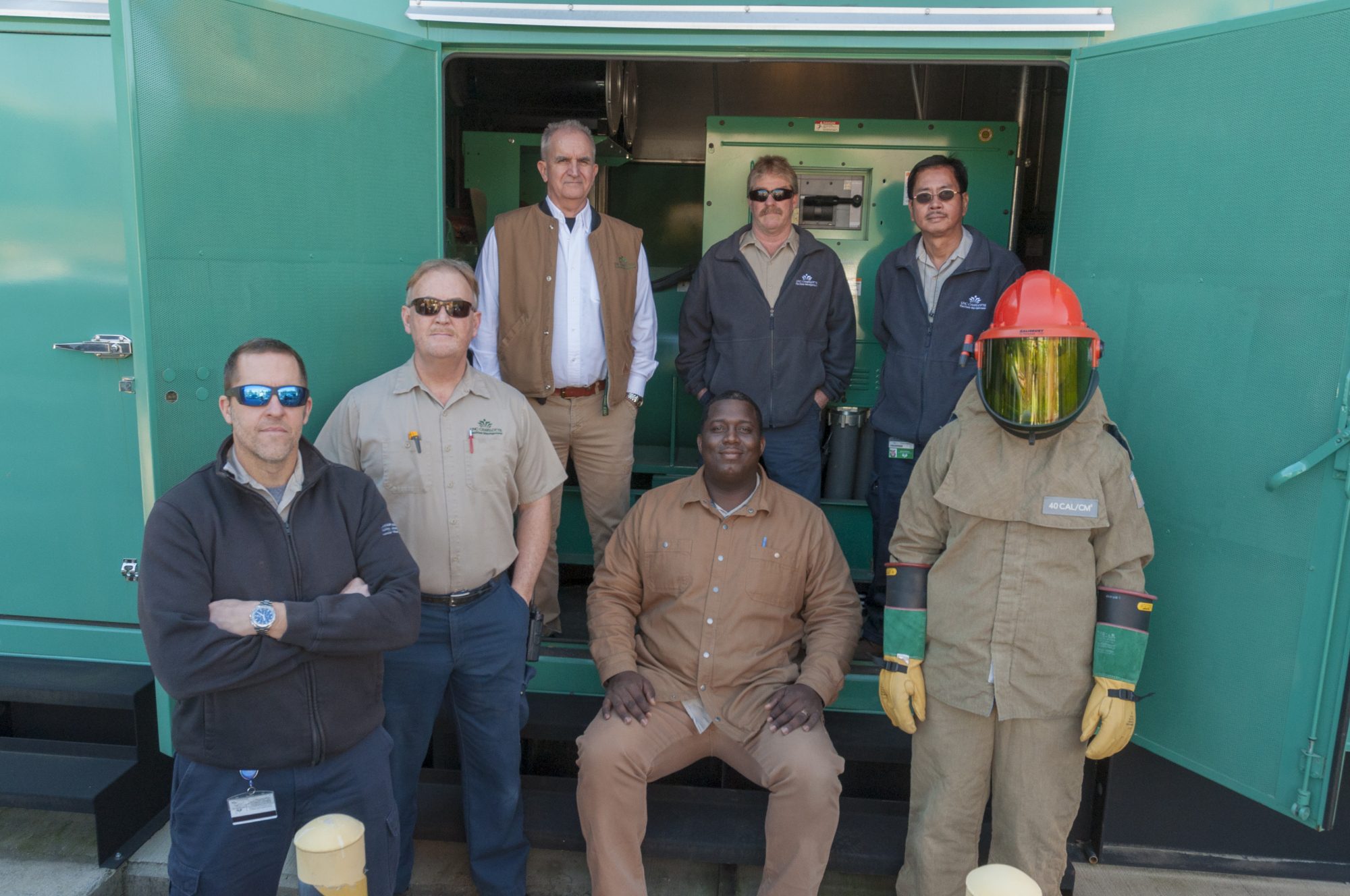GET TO KNOW: THE HIGH-VOLTAGE TEAM
Led by Tom MacNab, UNC Charlotte’s high-voltage team provides unique, specialized skills to the campus. It is work that can sometimes be dangerous. Learn more about the team below through an interview with MacNab.
What is the most practical way to describe the term high voltage?
OSHA classifies any use of electrical service over 600 volts as high voltage. Regulations and accepted industry standards state that employers meet specific training requirements for their employees who work with high-voltage electrical installations.
As it relates to scope of work, what does the high-voltage team do?
We create planned power outages for construction and maintenance activities and respond to unplanned outages as they arise. Additionally, our team maintains all electrical components and circuits outside of buildings including, but not limited to, switches, transformers, generators, mass evacuation alarms, traffic signal assemblies and light fixtures.
What are the differences and similarities beween an electrician and someone who works with high-voltage electrical systems?
Electricians, usually, work indoors with less than 600 volts; for example, work on receptacles, lighting, machines and motors. The majority of our work is also less than 600 volts, applying basic electrical skills. However, 25 percent of our work is over 600 volts requiring specialized safety practices, tools, means and methods. Continual specialized training is needed to keep this work safe and to ensure best practices remain in the front of our technician’s minds.

Who are the members of the utilities high voltage team? (name, years of service at UNC Charlotte, areas of responsibility)
-
Danny Dang, 10 years, electronics specialist, branch circuit repair, locating underground structures.
-
Raymond Butler, seven years, generator specialist
-
Tom MacNab, five years, team supervisor and all areas of work
-
Terry McCormick, four years, branch circuit repair and locating underground structures
-
Chris Desmet, four years, all areas of work
-
Travis Frady, three years, all areas of work
-
Del Allen, one year, branch circuit repair and locating underground structures
Inquiring minds want to know about “the suit.” Can you tell us more about it?
The protective suit is called a Level 4 arc flash suit. It is the highest level OSHA classifies (although there are more protective suits for hazardous environments). In the event the person wearing the suit encounters a high-voltage blast or flash, the suit is designed to absorb most of the impact. Essentially, the suit, hood, hearing protection, fire retardant clothing, 15kv gloves, safety glasses and safety shoes work together to help ensure any burn received by an individual is survivable in the event of an arc flash explosion.
As supervisor, what’s your UNC Charlotte journey?
I have been in the electrical business for more than 40 years. Starting out as a field electrician and moving into a vice president of operations position, I have been involved with large-scale commercial, industrial, institutional, medical, infrastructure and utility construction projects. Prior to UNC Charlotte, I was a senior project manager for the electrical contractors who built the College of Health and Human Services, Union Deck, Bioinformatics, the recreational fields behind the Wells Fargo Field House, Jerry Richardson Stadium and multiple infrastructure projects.
Tell us about the team’s most memorable project.
Last year, we encountered two occurrences that interrupted power to a number of buildings when Circuit F failed on Jan. 25 and Nov. 1. These faults lifted the lids off the manholes. The team responded quickly, efficiently, effectively and safely to mitigate both of these interruptions in a very short time period. They engaged advanced technology and fully tested the remaining 3,100 feet of circuit prior to placing it back into service.
Interview and photography: NiCole Lynch